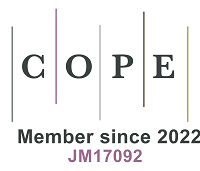REFERENCES
1. Kurt-karakus PB, Alegria H, Jantunen L, et al. Polybrominated diphenyl ethers (PBDEs) and alternative flame retardants (NFRs) in indoor and outdoor air and indoor dust from Istanbul-Turkey: levels and an assessment of human exposure. Atmospheric Pollution Research 2017;8:801-15.
2. Melymuk L, Demirtepe H, Jílková SR. Indoor dust and associated chemical exposures. Current Opinion in Environmental Science & Health 2020;15:1-6.
3. Liu D, Wu P, Zhao N, et al. Differences of bisphenol analogue concentrations in indoor dust between rural and urban areas. Chemosphere 2021;276:130016.
4. Al-Harbi M, Al-Enzi E, Al-Mutairi H, Whalen JK. Human health risks from brominated flame retardants and polycyclic aromatic hydrocarbons in indoor dust. Chemosphere 2021;282:131005.
5. Abdallah MA, Bressi M, Oluseyi T, Harrad S. Hexabromocyclododecane and tetrabromobisphenol-A in indoor dust from France, Kazakhstan and Nigeria: implications for human exposure. Emerging Contaminants 2016;2:73-9.
6. Barghi M, Shin ES, Kim JC, Choi SD, Chang YS. Human exposure to HBCD and TBBPA via indoor dust in Korea: estimation of external exposure and body burden. Sci Total Environ 2017;593-594:779-86.
7. Wang J, Wang Y, Shi Z, Zhou X, Sun Z. Legacy and novel brominated flame retardants in indoor dust from Beijing, China: occurrence, human exposure assessment and evidence for PBDEs replacement. Sci Total Environ 2018;618:48-59.
8. Fromme H, Hilger B, Kopp E, Miserok M, Völkel W. Polybrominated diphenyl ethers (PBDEs), hexabromocyclododecane (HBCD) and “novel” brominated flame retardants in house dust in Germany. Environ Int 2014;64:61-8.
9. Li F, Jin J, Tan D, et al. Hexabromocyclododecane and tetrabromobisphenol A in sediments and paddy soils from Liaohe River Basin, China: Levels, distribution and mass inventory. J Environ Sci (China) 2016;48:209-17.
10. U.S. EPA. Flame retardant alternatives for hexabromocyclododecane (HBCD). Available from: https://www.epa.gov/sites/default/files/2014-06/documents/hbcd_draft.pdf [Last accessed on 18 Apr 2022].
11. Abafe OA, Martincigh BS. Determination and human exposure assessment of polybrominated diphenyl ethers and tetrabromobisphenol A in indoor dust in South Africa. Environ Sci Pollut Res Int 2016;23:7038-49.
12. Abdallah M. Environmental occurrence, analysis and human exposure to the flame retardant tetrabromobisphenol-A (TBBP-A)-A review. Environ Int 2016;94:235-50.
13. Malkoske T, Tang Y, Xu W, Yu S, Wang H. A review of the environmental distribution, fate, and control of tetrabromobisphenol A released from sources. Sci Total Environ 2016;569-570:1608-17.
14. Wu Y, Li Y, Kang D, et al. Tetrabromobisphenol A and heavy metal exposure via dust ingestion in an e-waste recycling region in Southeast China. Sci Total Environ 2016;541:356-64.
15. Hassan Y, Shoeib T. Levels of polybrominated diphenyl ethers and novel flame retardants in microenvironment dust from Egypt: an assessment of human exposure. Sci Total Environ 2015;505:47-55.
16. Corsolini S, Metzdorff A, Baroni D, et al. Legacy and novel flame retardants from indoor dust in Antarctica: sources and human exposure. Environ Res 2021;196:110344.
17. Abdallah MA, Harrad S, Covaci A. Hexabromocyclododecanes and tetrabromobisphenol-A in indoor air and dust in Birmingham, U.K: implications for human exposure. Environ Sci Technol 2008;42:6855-61.
18. Besis A, Christia C, Poma G, Covaci A, Samara C. Legacy and novel brominated flame retardants in interior car dust - implications for human exposure. Environ Pollut 2017;230:871-81.
19. Peng C, Tan H, Guo Y, Wu Y, Chen D. Emerging and legacy flame retardants in indoor dust from East China. Chemosphere 2017;186:635-43.
20. Yadav IC, Devi NL, Singh VK, Li J, Zhang G. Measurement of legacy and emerging flame retardants in indoor dust from a rural village (Kopawa) in Nepal: implication for source apportionment and health risk assessment. Ecotoxicol Environ Saf 2019;168:304-14.
21. Drage DS, Waiyarat S, Harrad S, Abou-elwafa Abdallah M, Boontanon SK. Temporal trends in concentrations of legacy and novel brominated flame retardants in house dust from Birmingham in the United Kingdom. Emerging Contaminants 2020;6:323-9.
22. Allgood JM, Jimah T, McClaskey CM, et al. Ogunseitan O.A. potential human exposure to halogenated flame-retardants in elevated surface dust and floor dust in an academic environment. Enviro Res 2017;153:55-62.
23. Harrad S, Goosey E, Desborough J, Abdallah MA, Roosens L, Covaci A. Dust from U.K. primary school classrooms and daycare centers: the significance of dust as a pathway of exposure of young U.K. children to brominated flame retardants and polychlorinated biphenyls. Environ Sci Technol 2010;44:4198-202.
24. Shen M, Ge J, Lam JCW, Zhu M, Li J, Zeng L. Occurrence of two novel triazine-based flame retardants in an E-waste recycling area in South China: implication for human exposure. Sci Total Environ 2019;683:249-57.
25. Li W, Li J, Deng M, Pan Y, Zeng L. Benzotriazoles and benzothiazoles prevail in indoor dust from an E-waste dismantling area in South China: elevated concentrations and implication for human exposure. Sci Total Environ 2020;723:137979.
26. Deng M, Han X, Ge J, et al. Prevalence of phthalate alternatives and monoesters alongside traditional phthalates in indoor dust from a typical e-waste recycling area: Source elucidation and co-exposure risk. J Hazard Mater 2021;413:125322.
27. Gwon HR, Oh HJ, Chang KH, et al. Occurrence, distribution, and potential exposure risk of organophosphate flame retardants in house dust in South Korea. Sci Total Environ 2021;770:144571.
28. Stapleton HM, Klosterhaus S, Keller A, et al. Identification of flame retardants in polyurethane foam collected from baby products. Environ Sci Technol 2011;45:5323-31.
29. Kweon D, Kim M, Zoh K. Distribution of brominated flame retardants and phthalate esters in house dust in Korea. Environmental Engineering Research 2018;23:354-63.
30. Thailand National Metal and Materials Technology Center (MTEC), National Science and Technology Development Agency (NSTDA). Thailand’s POPs Inventory Assessment Report (Part 2: Thailand’s 2019 POPs industrial chemicals inventory). 1st ed (ISBN 978-616-12-0616-1). MTEC & NSTDA Pub; 2021. p. 63-73. Available from: https://www.mtec.or.th/annual-report2021/th/ [Last accessed on 18 Apr 2022].
31. Kalachova K, Hradkova P, Lankova D, Hajslova J, Pulkrabova J. Occurrence of brominated flame retardants in household and car dust from the Czech Republic. Sci Total Environ 2012;441:182-93.
32. Dodson RE, Perovich LJ, Covaci A, et al. After the PBDE phase-out: a broad suite of flame retardants in repeat house dust samples from California. Environ Sci Technol 2012;46:13056-66.
33. US-NRC (US-National Research Council). Toxicological risks of selected flame-retardant chemicals. Available from: https://www.ncbi.nlm.nih.gov/books/NBK225647/pdf/Bookshelf_NBK225647.pdf [Last accessed on 18 Apr 2022].
34. Zeller H, Kirsch P. Hexabromocyclododecane: 90-day feeding trials eith rats. 1970. Available from: https://www.ncbi.nlm.nih.gov/books/NBK225647/pdf/Bookshelf_NBK225647.pdf [Last accessed on 20 Apr 2022].
35. Ali N, Dirtu AC, Van den Eede N, et al. Occurrence of alternative flame retardants in indoor dust from New Zealand: indoor sources and human exposure assessment. Chemosphere 2012;88:1276-82.
36. Wikoff D, Thompson C, Perry C, et al. Development of toxicity values and exposure estimates for tetrabromobisphenol A: application in a margin of exposure assessment. J Appl Toxicol 2015;35:1292-308.
37. Yao L, Wang Y, Shi J, et al. Toxicity of tetrabromobisphenol A and Its derivative in the mouse liver following oral exposure at environmentally relevant levels. Environ Sci Technol 2021;55:8191-202.







